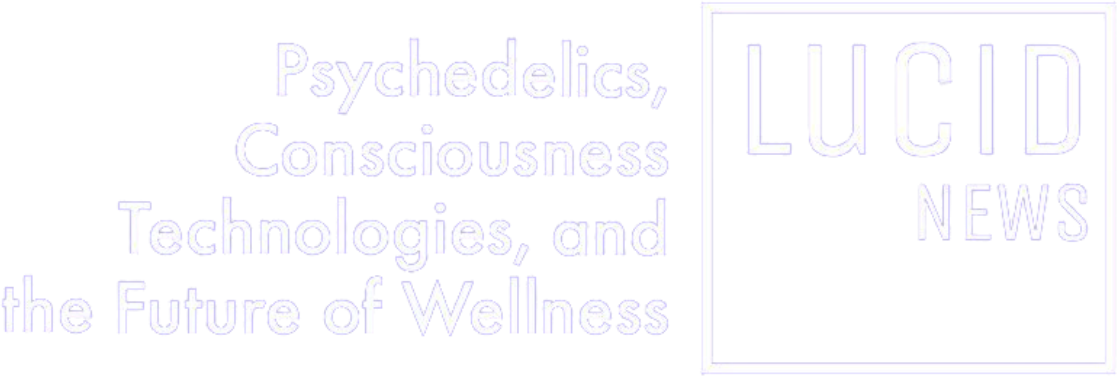Can Western Medicine Include the Sacred in Psychedelic-Assisted Psychotherapy?

Move over Freud, Jung, Piaget and Erikson. We are currently witnessing something unprecedented in the mental health industry — the psychedelic renaissance.
The Center for Disease Control states that over 50% of Americans – 165.5 million people – will be diagnosed with a mental disorder in their lifetime. The National Institute of Mental Health estimates that one of five suffer from mental health issues, and one of 25 suffer from serious illness, including depression, PTSD, OCD, addictions, anxiety, and schizophrenia. Many use pharmaceutical medications regularly prescribed by their doctors. In 2017, $333 billion was spent on prescription drugs – and the costs are rapidly rising. According to WebMed.com, almost 50% of Americans take at least one pill a day, and 12% take four or more. From 1997 to 2016, prescription drug consumption rose by 85%.
It’s no surprise that folks are turning to clinical, psychedelic-assisted therapy as an alternative to talk therapy and medication. However, is this the correct answer?
I personally began to study shamanic healing over 25 years ago. A two-week trip to Ecuador in 1997 led by John Perkins deepened my interest. I was later initiated into the Shuar Natém lineage by a Yachak shaman in the Andes, and into the Pajé tradition by a shaman in the Amazon. Deep in the Amazon, during a Shuar Natém ayahuasca ceremony, the spirit of a giant nocturnal moth flew above me over the jungle canopy, instructing me to protect the Amazon and its people, and to keep their ancient wisdom alive.
From the shamanic perspective, physical and mental illness fundamentally results from a world without balance between people and the environment. In individuals, this causes a lack of community connection, loneliness, detachment from the natural and spiritual worlds, and strong feelings of scarcity, fear, and misalignment with one’s soul. Because our souls enter our bodies before birth to experience a unique life purpose, this disparity creates an identity schism. To heal, we need to align with our soul’s purpose, and synergize our feminine energies (heart center, perception and nurturing) and masculine energies (mind center, logic and action).
The Western medical establishment acknowledges the isolation that many experience as a major cause for the breakdown of families and the mental illness epidemic. But the Western medical approach is for the doctor to label a depressive trait as a “disorder” or “sickness,” thus identifying the client as personally defective.
After decades of underground use, plant medicines (and other psychedelic substances) have burst into the mainstream. A massive amount of money is pouring in from entrepreneurs, business people, investors and startups who’ve sniffed out opportunities to cash in on the recent legalization of marijuana and the rising popularity of ayahuasca, mushrooms, and other indigenous plant medicines practices.
Ayahuasca, San Pedro, psilocybin, and other plant medicines are consumed in over 50 countries – in some places legally. Scientists backed by big pharma and investors apply for patents and FDA approval to use these plant teachers as mainstream medicine. These medicines are not only sought after as mental health therapies, but also as cures for physical issues by a growing group of physicians who apparently double as shamans. Search the internet and you will see that psychedelic-assisted therapy training programs, either online or in-person, are popping up nationwide like mushrooms after rain. Some psychotherapists feel pressured to offer this type of healing to their clients, who have heard about these magical treatments and hope for a short cut to relief. At the same time, the psychotherapy establishment at large has shown limited interest in embracing psychedelics.
In the West we are seeing two emerging and divergent approaches to psychedelic healing. There’s the clinical direction: psychedelic-assisted psychotherapy conducted in clinics and hospitals under medical supervision. Most facilitators do not acknowledge the element of spirit or the unseen world. They believe only in the material. Ironically, at the same time, they accept the psychedelic dream state, and acknowledge messages their clients receive from either their subconscious or unknown sources.
These medicalized psychedelic services are chosen by people who are afraid or unable to go to the jungles of South America. Some of these patients may trust only conventional Western doctors with their healthcare.
The other approach gaining wider attention comes from traditional indigenous ceremonies, like those performed in South American jungles. In the Western world, these ceremonies are led by either indigenous shamans on tour or by Westerners who, in many cases, have minimal training.
Many of the journeyers who take this route don’t trust the medical establishment. Disillusioned by unsuccessful treatments that they have experienced themselves, they seek alternative healing methods. Others who opt for this path are specifically seeking spiritual awakening experiences from their traditional source, sometimes as a daring initiation.
The Shamanic Worldview
According to the shamans, there is no difference between the seen and the unseen realms of reality and dreams, since everything in our universe is made of matter, of minuscule vibrating particles. We do not see them due to the limits of the human senses. To the naked eye, it might look like a mystery. But shamans don’t perceive it as a mystery because they know how the universal energy forces work.
Is air the same as emptiness? Even though, in our limited capacity, we do not see, touch, smell, taste, or feel anything, science affirms that air has mass and takes up physical space. So yes, air is made of matter. How else can birds or airplanes fly? Such is the case with spirits in the unseen world, according to all indigenous cultures and shamanic worldviews. Shamans believe that everything in our cosmos is alive and vibrating matter. The frequency of energy particles creates electrical tension between them, which they call consciousness. Just because we cannot see them, doesn’t mean they do not exist. They do not separate the seen and unseen worlds as Eurocentric, Christian-based cultures do.
Plant medicine healing is a tradition that goes back thousands of years, in the form of mostly communal ceremonies and sacred rituals practiced by people globally. Amazonian shamans undertake many years of complex and challenging training, sometimes starting as early as age eight, in order to perform these ceremonies. It requires a lifetime of deep commitment. Shamans not only learn how to prepare the hallucinogenic brews, but also to connect to the unseen worlds of nature and cosmic forces released by consuming those brews. They are trained to diagnose and navigate bad energies their clients may experience during the ceremonies. The ceremonies are held in specially built ceremonial houses by a river, where vines and bushes – the brew ingredients – grow. While preparing and cooking the medicine, the shaman sings and prays over the brew to transmit his energy into it. Participants are not allowed to leave the ceremonial house during the brewing, and other people can’t enter, in order to protect the brew’s energy from contamination.
Traditionally, only trained shamans, sometimes alone or in a group, drink the brew, helping them to make life decisions, see into the future, or observe other lands. They also use it to find a lost person, locate animals for hunting, or identify particular trees or plants used for healing. During the healing ceremony, the plant medicine helps the shaman “see” the spiritual, emotional, or physical root cause of the client’s illness. Once he diagnoses it, he attempts to remove or pull it out from the client’s physical, emotional, or spiritual bodies. In the Shuar tradition, they look at it as Tsentsak, or “poison arrows,” sent by evil spirits, or by other people possessed by jealousy and envy, with an intent to cause harm or death. The brew is given to the client to purge those energy blocks, and to purify and balance the digestive system’s PH, where the bad energy is held.
The Rise of Ayahuasca Tourism
Over the last twenty years, shamans began to offer ayahuasca for payment to anyone who visited them seeking spiritual awakening. This created plant medicine tourism, which spread worldwide. During the ceremonies, the shaman also performs Limpia – a form of energy purification using chakuna (special palm leaves), Agua Florida (perfume), tobacco smoke, and smudge. He chants icaros, soul songs that call on his spirit allies to help and guide him in the healing of the specific client.
The rainforest ambiance and sounds are just as important. The fragrance of fire embers burning. The lone candle lighting the shaman’s face and the shadows on the thatched roof. The murmuring of the flowing river, the whistling of the leaves in the night’s wind, the sound of croaking frogs, jaguars roaring in the distance, the sound of the cicadas’ cacophony, the flight and chirping of the black bats, the bright stars above, grandmother moonlight. These are an integral part of the creative visionary and healing process. The integration between the physical and nonphysical worlds plays a vital role in the client’s recovery.
The Shamanic Approach to Healing
The primary purpose of the plant medicine ceremony is not the psychedelic visions. According to shamans from the Kichwa and Siekopai tribes, to open one’s heart wide is more important. Their goal is to help their client experience the wonderment of creation, to have a mystical revelation. To embrace and merge with the vast cosmic filament’s matrix that connects us all in one interdependent web. To reweave the dreams. Then an emotional release happens, sending a rush of hormones and chemicals into our body, inducing an incredible feeling of wellbeing. Scientific data supports the mind-body connection.
As my friend Professor Rafi Malach, the Barbara and Morris L. Levinson professorial chair in brain research in the Department of Neurobiology at the Weizmann Institute of Science in Israel, wrote in my book Shamanic Healing:
“The deeper we attempt to understand these processes using scientific tools, the more enchanting and miraculous this process reveals itself to be, and the appreciation of this ungraspable phenomenon only deepens our amazement and humility.”
When people are in that state, they may communicate with “sublime beings,” the spirits of the natural world, listen with an open heart, and receive their messages. Genuine healing can happen when the client fully experiences that cosmic unity, aligned with the cosmic tapestry that created our universe. They no longer feel alone.
Can that state be achieved in a clinical setting, in a sterile room, facilitated by people who may have good intentions, but who are not trained to “see”? I don’t believe it can.
We can’t separate the environment that evolved our plant medicine practices from the medicine itself. The Western approach to extracting the ingredients of the plant medicine and uprooting it from its natural environment is neither healthy nor productive. It’s a Eurocentric, colonial approach that takes advantage of indigenous resources and wisdom for financial gains, without attempting the deep understanding and respect they deserve.
There is a foundational difference between “information” and “knowledge.” Information comes from the mind; it is a collection of scientific facts: formulas, equations, laws, rulebooks, and statistics. Knowledge comes from the heart; it is a personal experience which brings profound wisdom. True, lasting change happens when a person fully embodies the wisdom revealed to them, and makes it their own.
Indigenous healers do not share tedious information about their plants, medicines, formulas and the cosmos. They share deep wisdom through mysterious stories and magical ceremonies, so it can reach their client’s heart and soul more effectively.
We Need Therapists Trained in Shamanism
I believe that extensively training those who administer psychedelic-assisted therapy in the tradition and language of shamanism is a must for a successful treatment. The facilitator must create a sacred ceremonial space. Set an altar, light a candle, purify the room with smudging, and pray. They need to help the client transform from the daily, tangible conscious state into a world of spiritual awareness, where everything is magical and possible. They need to know how to effectively hold space without interfering with their client’s experience, no matter what happens. They also need to learn to protect themselves from the dark energies unleashed by the client’s visions.
Most importantly, they need to be fluent in the art of deciphering the client’s visions, symbolism and metaphors, in order to create a narrative of the client’s soul. How else can they interpret and integrate it into their client’s cultural belief system and contemporary lifestyle, or help their client make transformative decisions with deeper awareness?
Each rainbow color, topography, landscape, animal, angel, sacred object, bodily sensation, or extraterrestrial being has a specific meaning. They need to learn how to decode the visions. The poetic shamanic language and spirit communication are confusing for those just starting out on this path. Many lack understanding of this sacred language. They might take their vision literally, leading them to make hasty decisions. This can happen as the result of plant medicine visions or from dreams and trance states. That outcome could potentially be dangerous to them and their loved ones. Some may feel paranoid and divorce their spouses, quit their jobs, or move to faraway countries. Just because you had a vision of being swallowed by a jaguar, doesn’t mean you should jump off a dangerous cliff into the unknown.
People have benefited greatly from psychedelic-assisted therapy. I am not dismissing its value. However, the facilitators should bring with them a more holistic and nurturing experience in line with the intentions of the indigenous communities, where the medicine has its roots.
I am not suggesting that all 50 million people with mental and physical issues start roaming the jungles in search of shamans who will heal them. That could devastate the fragile indigenous ecosystems and their communities, which are already affected by plant medicine tourism. A holistic approach to psychedelic-assisted therapy in the Western world must be implemented consciously. We need to integrate ancient traditional wisdom and practices into our modern scientific medical system.
We cannot limit our approach to psychedelic-assisted therapy to the scientific study of plant medicine formulas or molecule structures. A new cadre of therapists is being called to experience the sacredness of working with plant medicine spirits. They have to learn the poetic language of spirit, and create a ceremonial sacred space in their offices to serve their clients better. By bringing the mind and the heart together, we achieve the balance needed for proper healing and harmony.
Image: Nicki Adams with modified image by Thomas Angus, Imperial College London









